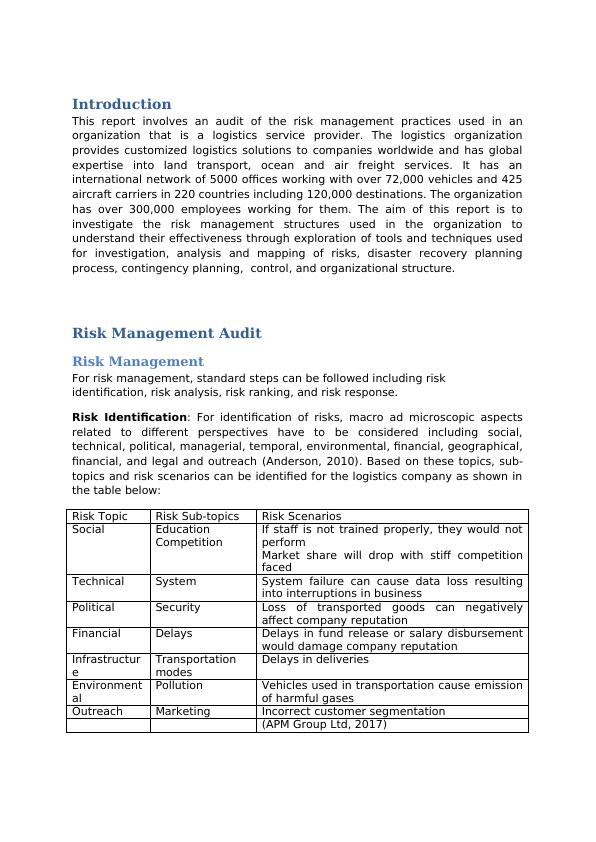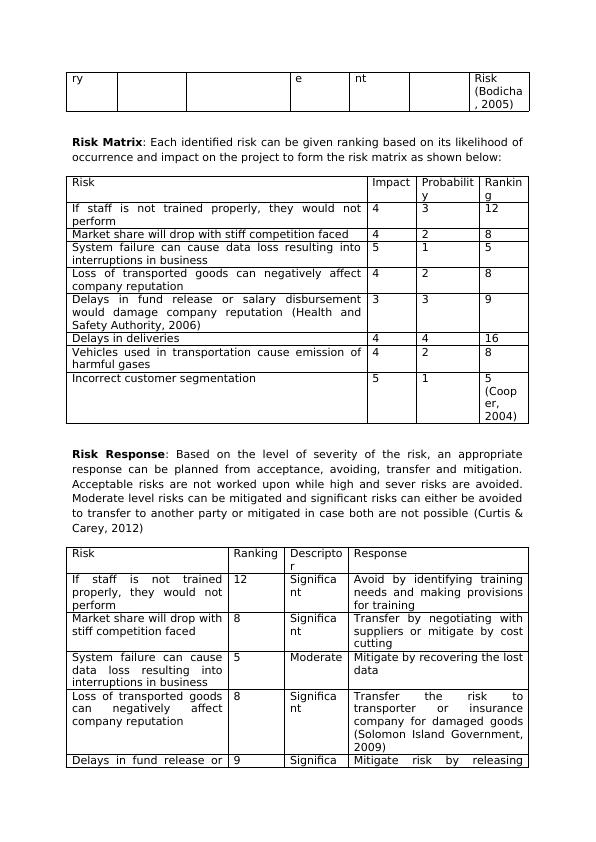Risk Management Practices in a Global Logistics Organization
7 Pages2134 Words277 Views
Added on 2020-03-16
About This Document
The aim of this report is to investigate the risk management structures used in the organization to understand their effectiveness through exploration of tools and techniques used for investigation, analysis and mapping of risks, disaster recovery planning process, contingency planning, control, and organizational structure. Based on these topics, sub-topics and risk scenarios can be identified for the logistics company as shown in the table below: Risk Topic Risk Sub-topics Risk Scenarios Social Education Competition If staff is not trained properly, they would
Risk Management Practices in a Global Logistics Organization
Added on 2020-03-16
ShareRelated Documents
End of preview
Want to access all the pages? Upload your documents or become a member.
Risk Management Audit in Company
|16
|3294
|102
Risk Management in Projects
|16
|4306
|448
Risk Analysis in Modernization and Replacement of WA Trains
|10
|1621
|78
Type of Risks in Supply Chain
|13
|3271
|468
Venue Risk Analysis For Salt And Palm
|18
|3345
|12
Risk Management Process and Strategies
|9
|4012
|83



